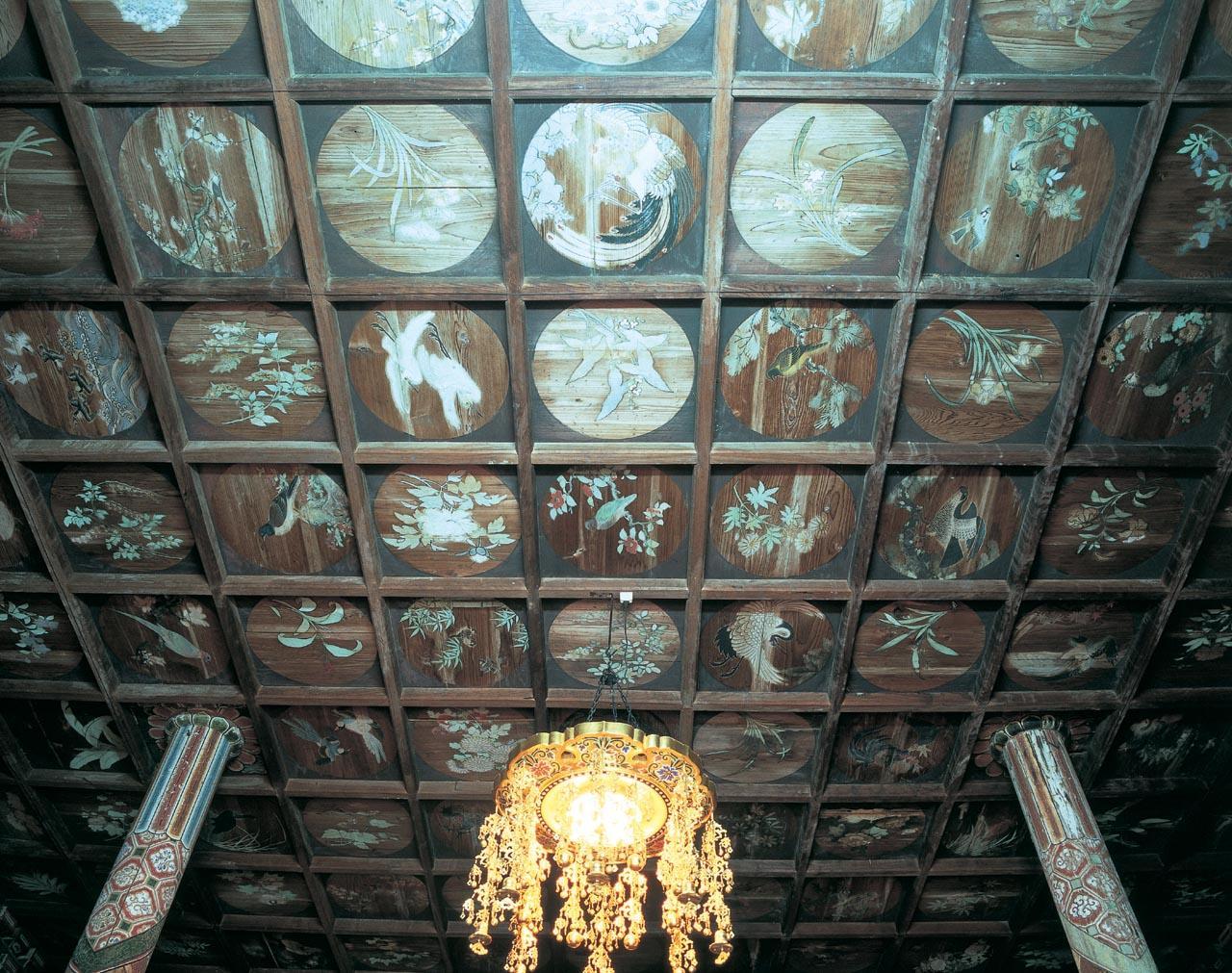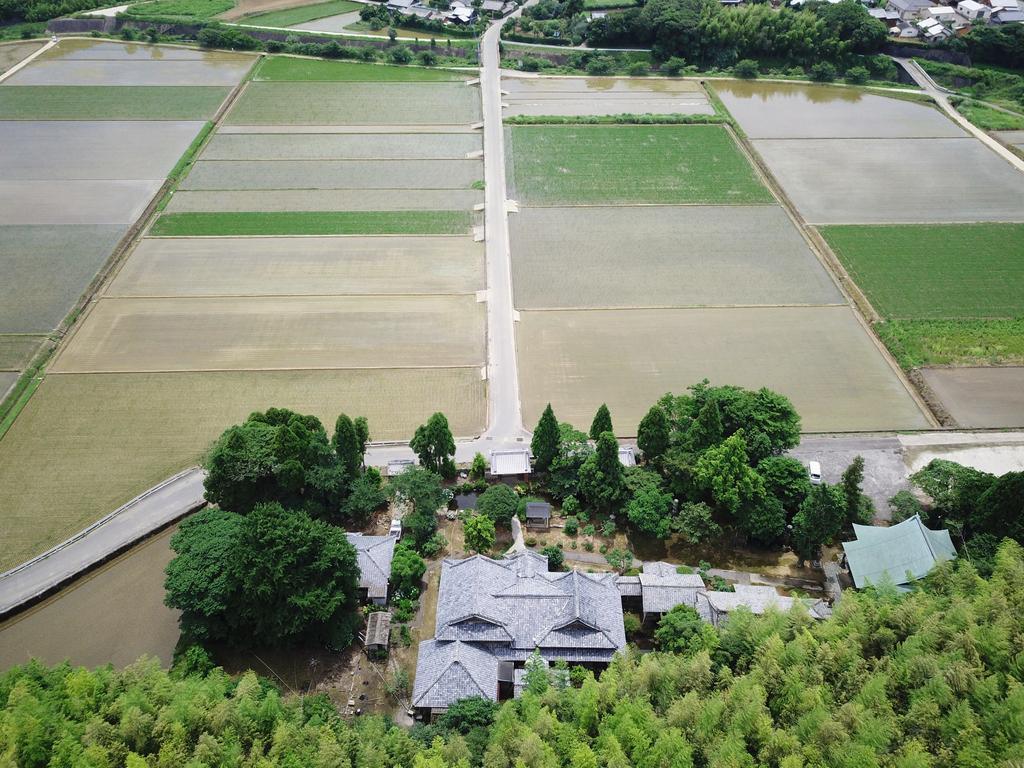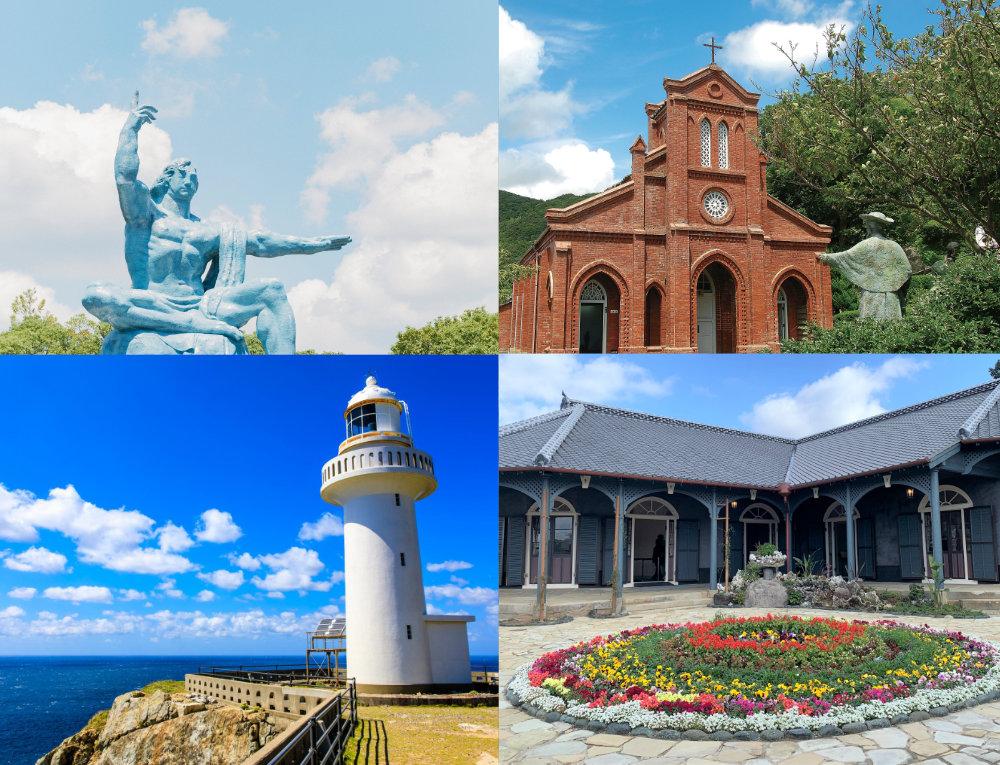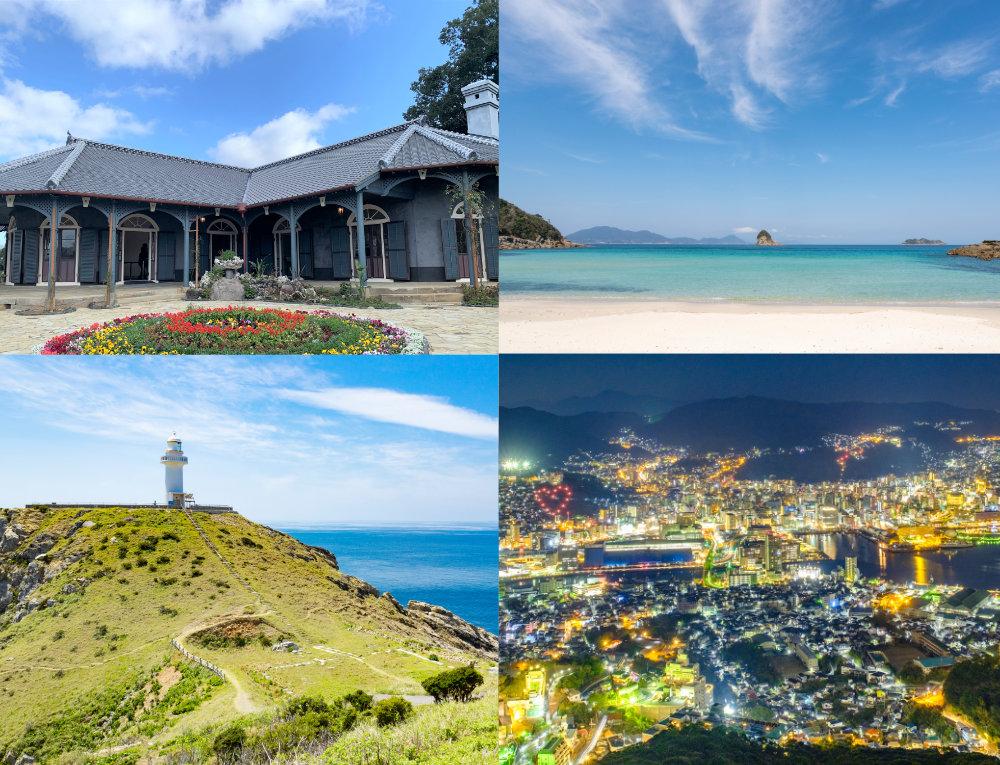
Look back at places from which students set off on a journey to China 1,200 years ago
Around 1,200 years ago, Fukue Island was the last port stop for students traveling from Japan to China.
The voyage from here to China was one on which they risked their lives. You’ll find places associated with the monk Kukai, who studied overseas, around the island; Miiraku, Myojoin Temple, the Hawser Stone of Shiraishi, and Daihoji Temple are recognized as Japan Heritage.
Try traveling around these spots, filled with the feelings of these students who crossed the ocean with do-or-die determination.
Contents
Japan Heritage: "The tale of the Border Islands, Iki, Tsushima, and Goto: A Bridge from Ancient Times"
Miiraku and Mimiraku-no-shima Peninsula
Miiraku Peninsula is located in the north-west of Fukue Island, and has been used as a path across the sea to the continent since ancient times. This was the final port of call for the ships carrying envoys to Tang China, who aimed to cross the East China Sea.
The islands are dotted with many facilities and monuments closely related to the Tang envoys and to Kukai, a famous Japanese monk, including Fuzenkawa, a well said to provide drinking water for the envoys’ ships, and Iwadake Shrine, where the people who died on the journey while protecting the envoys were enshrined. Another example is the Jihongai stone monument, standing in Kashiwazaki Park where you can look out onto the expanse of the East China Sea; the characters inscribed here (“辞本涯” (Jihongai)) mean “departing the furthest edge of Japan.”
Myojoin Temple
Myojoin Temple was the worshipping place chosen by the feudal lords of the Goto clan for many generations. The current main building was completed by the 28th Lord of Goto, Goto Moriyuki, in 1778.
The oldest wooden temple in Goto City was the worshipping place chosen by the feudal lords of the Goto clan for many generations. The current main building was completed by the 28th Lord of Goto, Goto Moriyuki, in 1778. Myojoin Temple is also the main temple for the Shingon Sect of Buddhism in Goto. The paintings on the ceiling of the main building are believed to have been painted by a disciple of the famed painter Kano Eitoku. Myojoin Temple, in which the famous monk Kukai is said to have stayed on his way back from China, contains many buddhist artefacts and statues dating back from Kamakura and Muromachi (mid-12th to mid-16th century) eras.
Shiraishi Tomozuna Stone
Kishikumachi-Shiraishi was the last port of call of the ships carrying envoys to Tang China. It is said that the ships were moored to this small Tomozuna stone when they entered port for repairs, food supplies, and to wait for favorable winds. In tribute to the exploits of the envoys who risked their lives, a small local shrine was constructed and the stone enshrined as a deity of fishing and safety at sea.
The small building housing the Tomozuna Stone receives offerings of flowers, and is still carefully looked after by the local people today.
Daihoji Temple
Daihoji was founded in 701, 1st year of Daiho Era at the request of empress emeritus Jito.
A century later, in 806, the famous monk Kukai taught the principles of Shingon Buddhism for the first time on his way back from China. Many cultural treasures are kept in the temple among which some nehan-zu paintings from Muromachi era (1336-1573), a bronze bell and a monkey sculpture by famous Edo era artist and carpenter Hidari Jingoro.
Monument for port stop of the Tang China envoy ships
This monument for the port stop of the Tang China envoy ships stands on the cape of Gyogasaki Park. It is visited by lots of tourists looking back on the locations connected to the envoys to Tang China, evoking thoughts about their long and perilous journey.
Itineraries that visit associated spots
Nagasaki City & first visit to Goto: trip around the island
Fukuoka City & first visit to Goto: trip around the island
Kumamoto City & Unzen, Shimabara: A self-indulgent route around Goto
Huis Ten Bosch & Nagasaki Chinatown: A self-indulgent route around Goto
Fukuoka City & travelling around the Goto Islands
Nagasaki City & travelling around the Goto Islands
Japan Heritage: Tour sites relating to Kukai and the envoys to Tang China
Ranking of popular articles
-

Head to the Goto Islands for fishing in Japan! Guide to fishing spots and boats
-

Tourism guide for first-time visitors to Goto: Introducing islands where nature and history exist in harmony
-

Goto Islands Geopark: Goto’s scenic spots & Map
-

Nine sea-swimming destinations in Goto & Map, and wonderful sea experiences!
-

Visiting Goto’s churches, built by the hidden Christians
































![[Starting from Nagasaki] Nagasaki sightseeing & Goto (Fukue Island): Fun route (4days)-1](https://goto.nagasaki-tabinet.com/storage/special_features/222/responsive_images/zHqlBrx66d2vjMullwTKPW3CgQ2g7dMRcmYgK7ss__1000_765.jpeg)


![[Starting from Kumamoto] Sightseeing in Kumamoto City & Unzen, Shimabara: A self-indulgent route around Goto-1](https://goto.nagasaki-tabinet.com/storage/special_features/238/responsive_images/dV5u9urj9uKWisf97c3i1QQP6s4nMNMusRv8qx13__1000_765.jpeg)
![[Starting from Kumamoto] Huis Ten Bosch & Nagasaki Chinatown: A self-indulgent route around Goto-1](https://goto.nagasaki-tabinet.com/storage/special_features/239/responsive_images/fZ4oFTx63NUiNFa10cgLZ87B3gxy0lacUexUk72r__1000_765.jpeg)







![[Starting from Hakata] Sightseeing in Fukuoka and Nagasaki & Goto (Fukue Island): Fun route (4days)-1](https://goto.nagasaki-tabinet.com/storage/special_features/221/responsive_images/PRTKDAvYWK8lxEjY6W9qsDAvPhqIVdKi3pw4IoG9__1000_765.jpeg)





